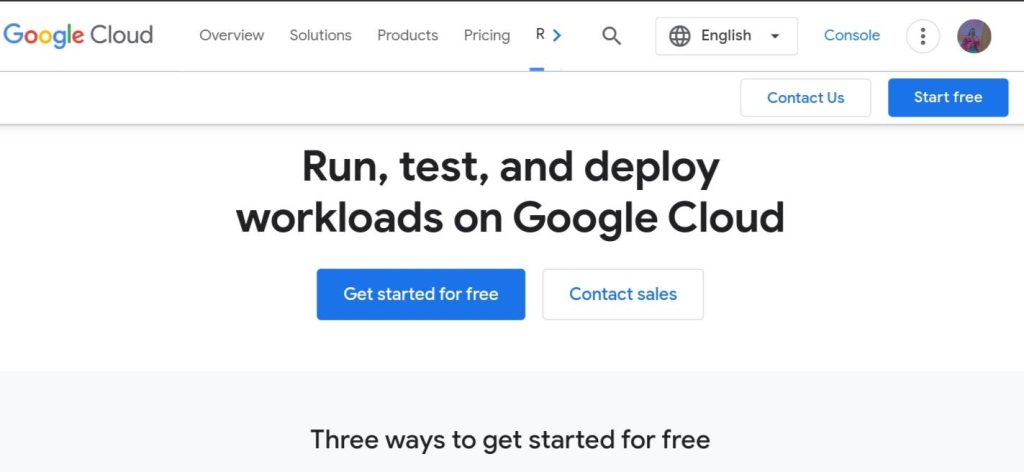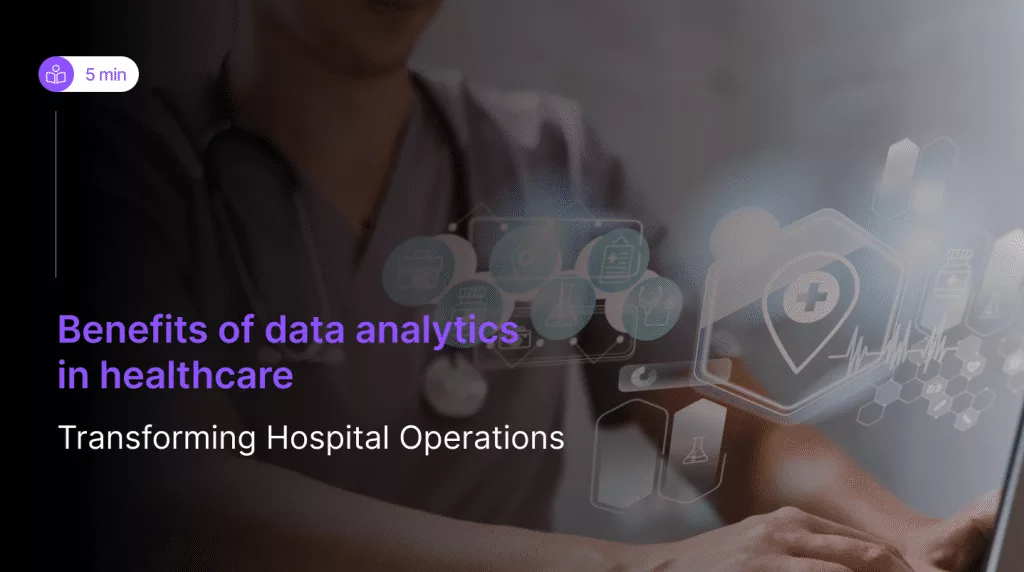 In this digital era, Cloud computing tools have become an important part of enterprises or developers that want to use the flexibility and power of the cloud. This article will cover the 10 best cloud computing tools as of 2025 that allow you to perform any task spanning from cost monitoring and workflow automation. Whether you have some experience in the cloud or are a complete newbie to the cloud, this list will provide everything that one aims to leverage the cloud more effectively and efficiently.
In this digital era, Cloud computing tools have become an important part of enterprises or developers that want to use the flexibility and power of the cloud. This article will cover the 10 best cloud computing tools as of 2025 that allow you to perform any task spanning from cost monitoring and workflow automation. Whether you have some experience in the cloud or are a complete newbie to the cloud, this list will provide everything that one aims to leverage the cloud more effectively and efficiently.
In this article, we will discuss some of the best cloud computing tools that play an important role in modern IT infrastructure. These tools allow any individual or organization to improve agility, optimize their resources, and drive innovation, resulting in reshaping the way technology is being used to achieve business goals.
What are Cloud Computing Tools?
A cloud computing tool is a software, service, or application tailored to ease the development, deployment, control, and utilization of cloud services. These tools are built on purpose to boost the scalability, adaptability, and effectiveness of the cloud computing atmosphere.
These tools are versatile and can fulfill various functions like monitoring data storage and provisioning virtual servers to streamline deployments and analyze performance. They empower individuals and enterprises to take advantage of their cloud infrastructure capabilities for storing data, hosting applications, and executing tasks without any need to invest big amounts in physical hardware or handling infrastructure management complexities.
What Types Of Cloud Computing Tools Available?
There are varieties of Cloud computing tools depending heavily on whom you are signing up on the Cloud Service Provider (CSP). Most of them offer software, infrastructure, and other important things to operate applications and workloads. The types of Cloud services available in the market are:
1. On-premise
On-premise Cloud computing tools are those resources that are available specifically to a single organization. These tools provide virtualized services such as greater brand infrastructure visibility and public clouds.
2. IaaS
IaaS often known as Infrastructure as a Service is the type of Cloud Computing service in which the subscription is decided based on a pay-as-you-go model. It includes networking hardware, storage, and servers. IaaS services offer a variety of services, like billing, clustering, storage resiliency, load balancing, data backups, and more.
3. PaaS
PaaS also known as Platform as a Service solution delivers hardware and software tools to companies by using third-party service providers. PaaS services in Cloud computing include IBM Cloud, AWS, Oracle Cloud Platform (OCP), Red Hat, Perimattic, and OpenShift.
4. SaaS
SaaS also known as Software as a Service is a cloud hosting model where you get access to services on subscription rather than purchasing the software or equipment. Saas works globally and developers can install applications from anywhere and use their interesting features.
Best Cloud Computing Tools in 2025
1. AWS (Amazon Web Services)

AWS is a cloud platform that provides you with a wide variety of services including computing capabilities, machine learning, storage solutions, databases, analytics, and beyond. AWS is widely known for its expansive worldwide adaptability, infrastructure, and pay-as-you-go pricing structure.
Key Features of AWS
1. AWS provides a comprehensive range of cloud services.
2. AWS provides you with global infrastructure with an extensive data center network.
3. It provides you Flexibility, Scalability, and pay-as-you-go pricing
Benefits of AWS
1. Wide range of service offerings
2. Robust security measures
3. 24×7 community and support
2. Microsoft Azure
 Microsoft Azure is also one of the cloud computing platforms introduced by Microsoft that provides a variety of services that are almost similar to AWS. It includes solutions for computing, storage, analytics, databases, and more.
Microsoft Azure is also one of the cloud computing platforms introduced by Microsoft that provides a variety of services that are almost similar to AWS. It includes solutions for computing, storage, analytics, databases, and more.
Key Features of Microsoft Azure
1. It provides comprehensive cloud services with robust integration with Microsoft products.
2. It offers a wide range of enterprise solutions.
Benefits of Microsoft Azure
1. Seamless integration with Microsoft ecosystem.
2. Hybrid cloud capabilities.
3. Strong enterprise focus.
3. Google Cloud Platform
 Google’s cloud computing platform offers services for computing, storage, machine learning, databases, and data analytics. It is known for its data-related services strength and machine learning capabilities.
Google’s cloud computing platform offers services for computing, storage, machine learning, databases, and data analytics. It is known for its data-related services strength and machine learning capabilities.
Key Features of Google Cloud Platform
1. Strong data analytics and machine learning services.
2. Emphasis on open-source technologies.
3. Powerful global network infrastructure.
Benefits of Google Cloud Platform
1. Data-centric approach with ML services and BigQuery
2. Competitive pricing, especially for data-intensive workloads.
4. DigitalOcean
 DigitalOcean is also one of the cloud infrastructure providers that focuses on simplicity and user-friendly environments. It is widely known among small enterprises and individual developers for its cost-effective solutions and ease-of-use features.
DigitalOcean is also one of the cloud infrastructure providers that focuses on simplicity and user-friendly environments. It is widely known among small enterprises and individual developers for its cost-effective solutions and ease-of-use features.
Key Features of DigitalOcean
1. It is tailored specifically for developer-centric cloud platforms keeping simplicity in mind.
2. DigitalOcean provides easy-to-use and cost-effective services for new startups and developers.
Benefits of DigitalOcean
1. It provides a developer-friendly interface and quick setup.
2. Competitive pricing for small-scale projects.
5. IBM Cloud
 IBM Cloud is a cloud computing platform that offers several cloud services, including computing power, databases, storage options, and AI services. It is very well known for its enterprise-focused solutions.
IBM Cloud is a cloud computing platform that offers several cloud services, including computing power, databases, storage options, and AI services. It is very well known for its enterprise-focused solutions.
Key Features of IBM Cloud
1. Strong enterprise offerings, including AI and blockchain.
2. It emphasizes hybrid and multi-cloud deployments.
3. It majorly focuses on industry-specific solutions.
Benefits of IBM Cloud
1. Strong hybrid cloud capabilities
6. Oracle Cloud
 Oracle Cloud is a cloud computing service of Oracle Corporation. It offers a range of cloud services, including computing, databases, storage, networking, and enterprise applications.
Oracle Cloud is a cloud computing service of Oracle Corporation. It offers a range of cloud services, including computing, databases, storage, networking, and enterprise applications.
Key Features of Oracle Cloud
1. Enterprise-grade database services.
2. Major focus on security and compliance.
3. It offers a range of cloud services.
Benefits of Oracle Cloud
1. The best choice for organizations heavily depends on Oracle products.
2. It emphasizes data security and compliance.
7. GitHub
GitHub is a web-based platform that is used for collaboration and version control. Although it is not a cloud computing platform, it is widely used by many developers to host and manage codes, making it an important tool for several cloud-based development projects.
Key Features of GitHub
1. Collaboration, version control, and code repository hosting.
2. Strong developer community and atmosphere.
Benefits of GitHub
1. It is essential for collaborative software development.
2 It integrates well with developer workflows.
8. Jenkins
Jenkins is an open-source automation server that helps you in the software development process. It is commonly used for continuous integration (CI) and continuous delivery (CD) pipelines, including deployment and cloud platforms.
Key Features of Jenkins
1. It is an open-source automation server for continuous integration (CI) and continuous delivery (CD).
2. It helps to automate parts of the software development process.
Benefits of Jenkins
1. Extensive plugin atmosphere for customization.
2. It facilitates automated testing and deployment pipelines.
9. Puppet
Puppet is also a cloud computing tool that is used for the management of the infrastructure and automating the provisioning. It maintains consistent configurations across several servers. It is often used in the cloud ecosystem to manage large-scale deployments.
Key Features of Puppet
1. It is a configuration management tool for the management of infrastructure and automating the provisioning.
2. It ensures consistent configurations across several servers.
Benefits of Puppet
1. It supports infrastructure as code( IaC) practices.
2. Puppet provides you with centralized management and reporting for the configurations.
10. Perimattic

Perimattic offers you a variety of cloud services like public, private, and hybrid cloud options. Perimattic uses Software as a Service (SaaS), Platform as a Service (PaaS), and Infrastructure as a Service (IaaS) service models depending on your requirements and needs.
Key Features of Perimattic
1. Perimattic provides world-class cloud services with a variety of options.
2. It helps to scale and seamlessly move your application workloads.
3. It uses SaaS, PaaS, and Infrastructure as a Service IaaS service models depending on your requirements and needs.
Benefits of Perimattic
1. It helps you to improve productivity by lowering your costs and reducing time.
2. It provides customers with on-demand delivery of computing services, applications, and tools.
3. It helps organizations in reducing their IT resource requirements.
Conclusion
In conclusion, this guide provides you with a deep understanding of the various top cloud computing tools that you should know along with the features they provide. With this guide, you will know what you are getting into when you start your cloud computing journey.
By using these cloud computing tools, you can easily control cloud infrastructure. Apart from this, you will be able to open multi-folds of job opportunities that will pay you high and provide a roadmap towards your successful career as a cloud computing engineer. From managing the cost to deployment automation, these tools will enable you to optimize your cloud infrastructure and make your process smooth. Although just knowing these tools isn’t enough for you, you should also know how to use them effectively to get the desired results you want.


